Morocco
Things to Do
Ouarzazate
Atlas film studio's
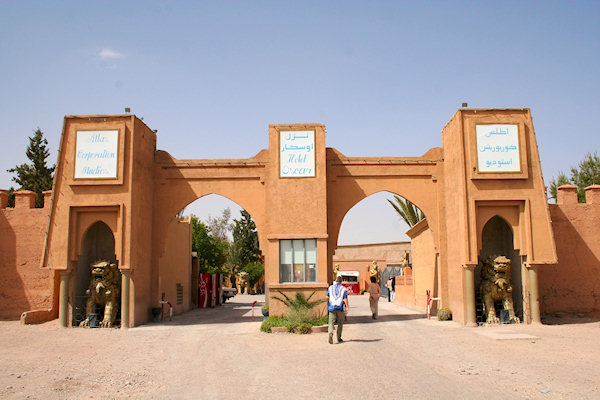 |
|||||
Lying at the confluenze of the Atlas, Ouerzazate (pronouced war-zazat has always been
a strategic location. In 1928, the French installed a garrison and developed teh town as an
administrative centre.
Ouarzazate has become the film centre of Morocco, and many productions, including The Sheltering
sky, Gladiator, The man who could be King, The last Temptation of Christ,
The living daylight and Asterix have been shot in the area.
Most movies are filmed at the Atlas Studios, 7km wets of Ouarzazate.
It's possible to visit the studio's to see the Tibetan monastry built for Scorcese's Kundun,
the plane used in Jewel of the Nile and the Egyptian sets used for various Cleopatra
films and documentaries.
Valley of a Thousend Kasbahs
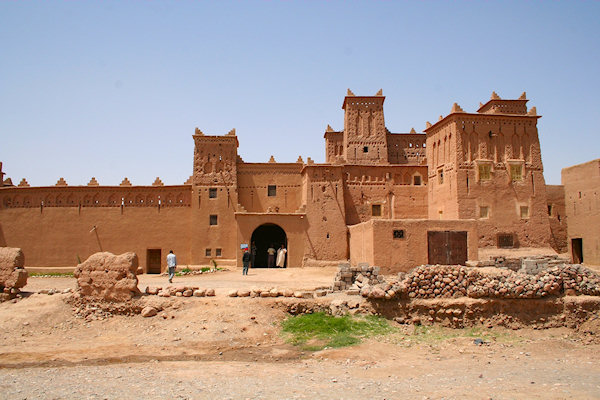 |
|||||
Heading roughly east from Ouarzazate, the Dades Valley threads its course between the mountains of
the High Atlas to the north and the rugged Jebel Sahro range to the south.
The biggest oases and the line of Kasbahs that give this route its nickname, Valley of a Thousend
Kasbahs, begin just before the town of Skoura.
Skoura is situated 39km east of Oarzazate en can be visited on a day trip.
The oases here contain a collection of impressive kasbahs, making it a good placeto explore out
of the midday sun.
Aït BenHaddou
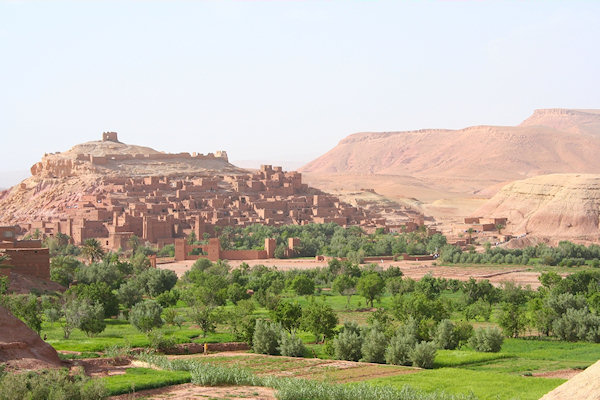 |
|||||
Aït Benhaddou, 32km from Ouarzazate, is one of the most exotic and best-preserved kasbahs in
the entire Atlas region.
This is hardly suprising, since it has been money poured into it as a result of being used for scenes in
as many as 20 films, notably Lawrence of Arabia, Jesus of Nazareth (for witch much of the
village was rebuilt), and most recently, Gladiator.
The kasbah's fame may endure in films but its population has dwindled in recent years. The kasbah is now
under Unesco protection.
In the upper reaches of the kasbah is a ruined fortified granary with magnificent vieuws of the surrounding
palmeria (palm grove) and, beyond, the unforgiving
High Atlas
Col du Tichka
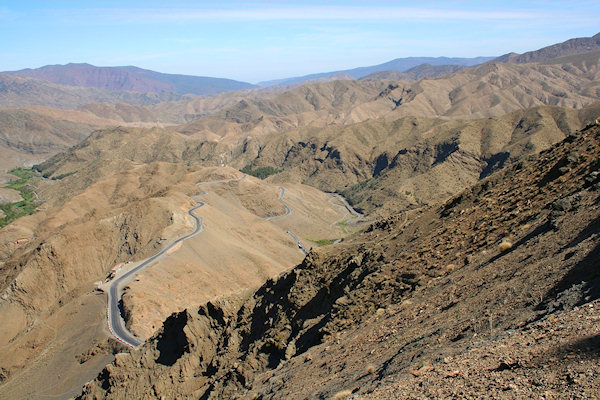 |
|||||
The route N9 from Quarzazate clims over the high Atlas mountains passing Col du Tichka
(2.260m) as its highest point.
On the south side the lunar landscape of the Anti Atlas and the desert, once passing the top the
scenery gets grener, with oak trees, walnur groves and oleander bushes.
The vieuws are breathtaking from numerous points along the way.
Essaouira
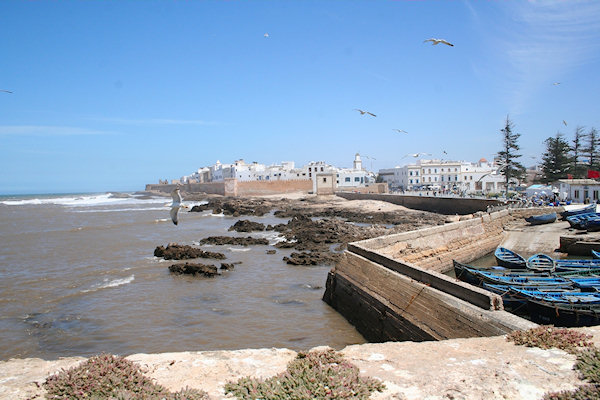 |
|||||
With its picture-potscard stone ramparts and turrets, and its almost perfectly preserved maze-like
medina, Essaouira (pronounced esa-wera is the most popular of the Atlantic coastal towns.
Inside the town walls, it's all light and charm, a labyrinth of narrow lanes, whitewashed houses, tranquil
squares and artisans in tiny workshops. Many Europeans and artists, enchanted by the place, have invested
in medina properties and an arty, expat influence is evident throughout the town.
Discovered by Phoenicians around the 7th century BC and possibly the site of the lost Cerne Island, which
the Carthaginian Hanno colonised in 450 BC, Essaouira has a long and illustrious history.
It was the Portugese who estabilished a commercial and military bridgehead here towards the end of the
15th century, which they named Mogador (from the Phoenician migdol, meaning watchtower)
Most of what stands today was builtin 1765 when sultan Sisi Mohammed ben Abdallah hired a French
architect, Theodore Cornut, to create a city suitable for foreign trade. The Sultan obviously liked
what he saw since the town was renamed Essaouira, meaning 'well designed'.
The town became an important commercial link between Timbuktu and Europe, trading European manafactured
goods for such sought-after commodities as gold, salt, ivory and ostrich feathers, and fulfilling the
Sultans prophecy that 'he who comes poor, leaves rich'
When the French protectorate was established in 1912 the town lost much of its importance to the up-coming
port-cities of Casablanca, Tangier and Agadir.
Harbour
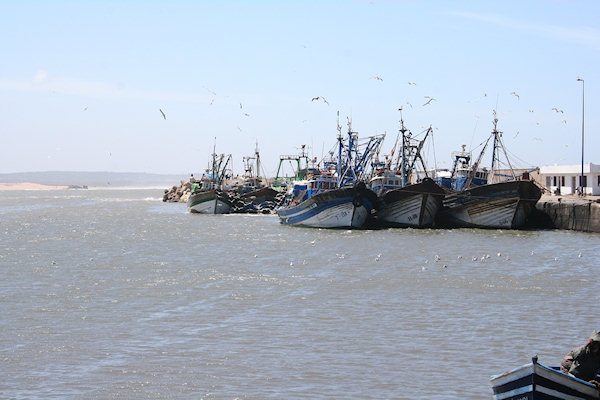 |
|||||
Essaouira maintains a busy working port, and the snug, fortified harbour, immediately southwest of
the medina, is a hive of activity, with nets laid out on the quayside, fishing boats unloading their
catch, traditional wooden boats being built and the seafood sizzling on outdoor grills.
Try also to take a look at the Fish Auction; it takes place in the market hall just outside the
port gates.
Skala du Port
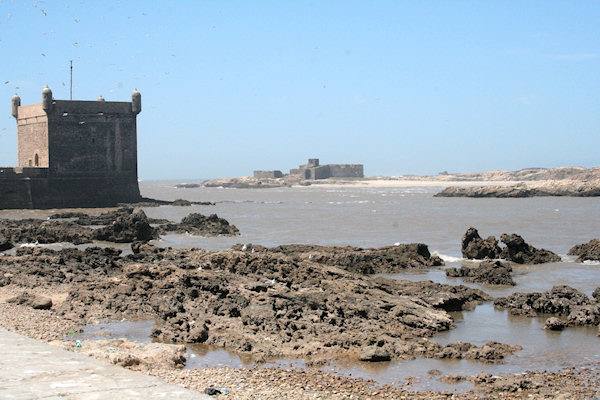 |
|||||
Down by the harbour, the Skala du Port offers cannons and fantastic picturesque views over
the fishing port and Île de Mogador
From here you can also look back at the walled medina amidst the wheeling seagulls, and capture that
same picture that you see on nearly all the official literature.
Skala de la Ville
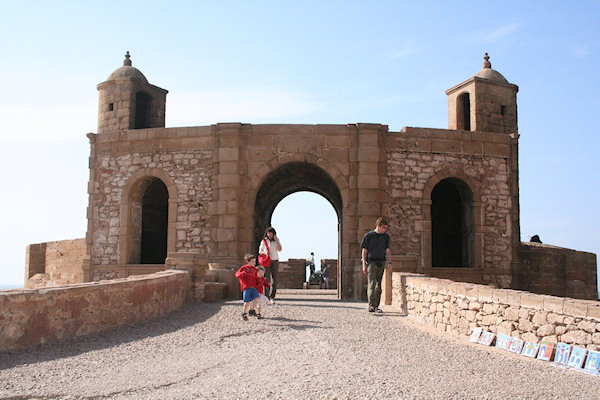 |
|||||
At the east side of the medina, you can gain acces to the ramparts and the Skala de la Ville,
the impressive sea bastion built along the cliffs.
Lined with a collection of European brass cannons from the 18th and 19th centuries the walkway has great
views out to sea.
Locals and tourists alike gather here to watch the sun disappear over the horizon
Argan Tree
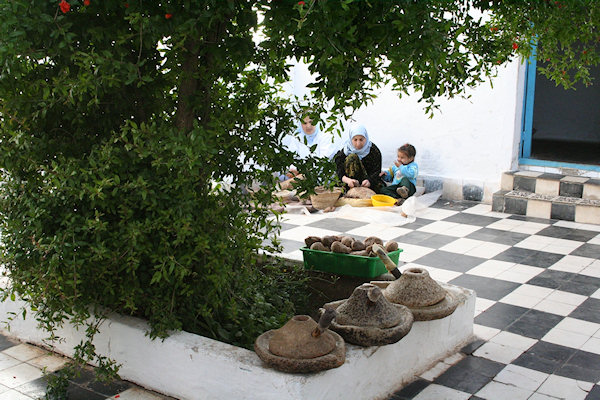 |
|||||
The hills around Ounara are home to the argan tree (Argania spinosa), a slow-growing thorn
tree similar to the olive.Unique to the southwest of Morocco, the sparse forest have recently been
recognised by Unesco as a Biosphere Reservé
The argan is vital to the local economy. Not only does it provide firewood and fodder for goats - which
actually climb among its branches - but its most valuable asset is the oil extracted from the nuts.
For centuries the Berbers have used the argan oil to heal scars and relieve rheumatic pain, and modern
resaerch has confirmed the oil's virtue in reducing cholesterol and helping to prevent arterioclerosis.